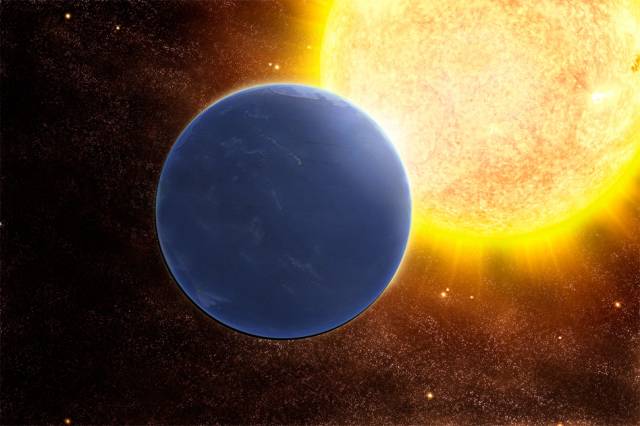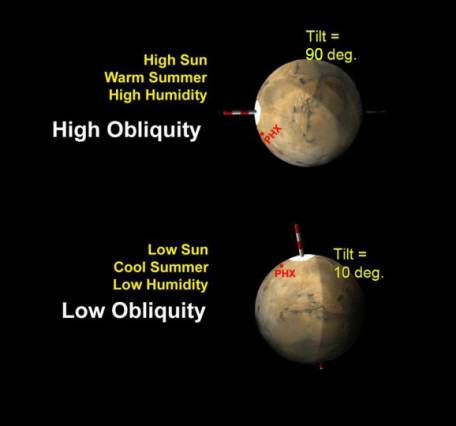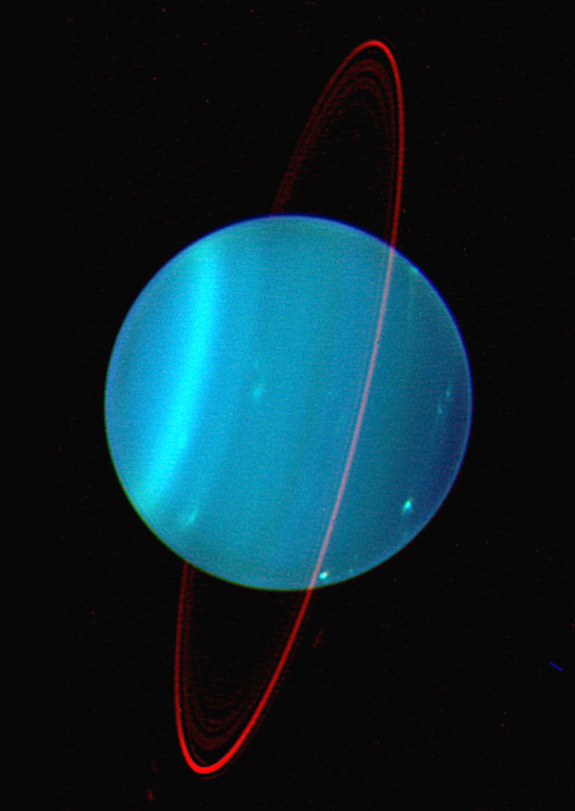
With so many exoplanets now being discovered on a regular basis by astronomers, the focus has turned to what number of them might be habitable for some kind of life. For life as we know it at least, that depends on a number of factors, including being in the “habitable zone” of stars, where liquid water could exist on the surfaces of smaller, rocky planets like Earth. It has been thought that planets with extreme axial tilts, even horizontal to the plane of their orbits, would be less likely to host life. But now a new study suggests that they could still be quite habitable, if they are covered by oceans.

Such ocean worlds are already thought to exist by astronomers, so this is good news for those that may have such radical axial tilts. In our own Solar System, Uranus is also tilted on its axis in this manner, at 97.77°, so its axis of rotation is approximately parallel with the plane of the Solar System—”lying on its side,” as it were, compared to the other planets. Uranus, however, is an ice giant planet, not a water world. Earth’s tilt by comparison is only 23˚.
The new findings come from research done at the Massachusetts Institute of Technology (MIT). The north pole of planets with such wild tilts would be in extended darkness, followed by extended daylight.
“The expectation was that such a planet would not be habitable: It would basically boil, and freeze, which would be really tough for life,” said David Ferreira, a former research scientist in MIT’s Department of Earth, Atmospheric and Planetary Sciences (EAPS). “We found that the ocean stores heat during summer and gives it back in winter, so the climate is still pretty mild, even in the heart of the cold polar night. So in the search for habitable exoplanets, we’re saying, don’t discount high-obliquity ones as unsuitable for life.”
Ferreira and his team decided to try simulations with a 3-D model of a rocky Earth-like planet covered by an ocean. The model included simulations of atmosphere, ocean, and sea ice circulations with a 3,000-meter deep global ocean. Motionless “swamp” oceans were also used as comparisons, with depths of 200 meters, 50 meters, and 10 meters.

Three different axial tilts were also used – 23˚ (like Earth), 54˚, and 90˚.
The results were surprising: A global ocean on a planet with a 90˚ tilt would absorb enough energy from the planet’s star during the polar summer to maintain a stable, spring-like climate when it released the energy back into the atmosphere during the polar winter. The same result was found even when the ocean was only an estimated 50 meters deep.
“We were expecting that if you put an ocean on the planet, it might be a bit more habitable, but not to this point,” Ferreira said. “It’s really surprising that the temperatures at the poles are still habitable.”
There do seem to be limits, however. If the ocean was only 10 meters deep, for example, there would a quite different effect: ice would form and quickly spread to the dark side of the planet. The ice sheets would be massive enough that even when that side of the planet turned back toward the Sun, the ice would simply reflect back the sunlight. The ice would then continue spreading into the new dark side of the planet, resulting in the entire planet being covered by ice instead of an ocean.
As Ferreira noted: “Some people have thought that a planet with a very large obliquity could have ice just around the equator, and the poles would be warm. But we find that there is no intermediate state. If there’s too little ocean, the planet may collapse into a snowball. Then it wouldn’t be habitable, obviously.”
Darren Williams, a professor of physics and astronomy at Pennsylvania State University, sums up the findings this way: “The upshot of all this is that exoplanets at high obliquity are not necessarily devoid of life, and are therefore just as interesting and important to the astrobiology community.”
The new paper has been published in the journal Icarus.
Want to keep up-to-date with all things space? Be sure to “Like” AmericaSpace on Facebook and follow us on Twitter: @AmericaSpace



